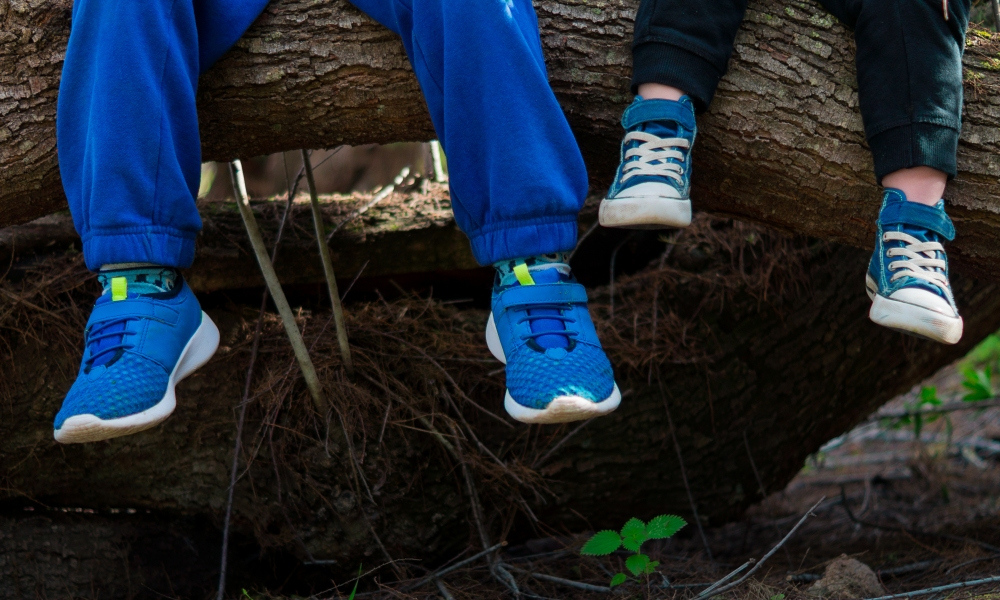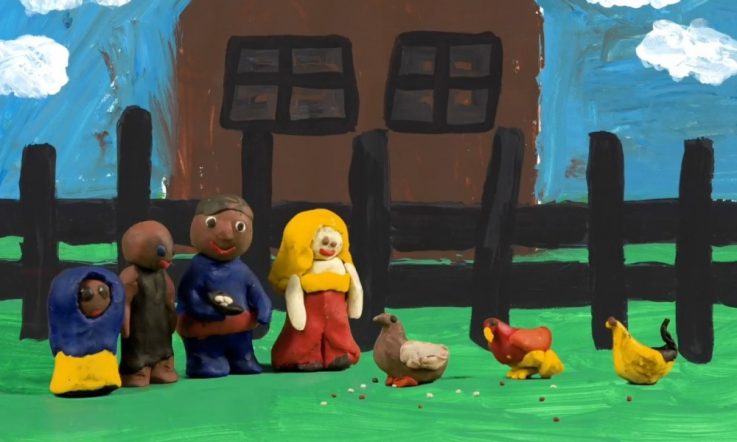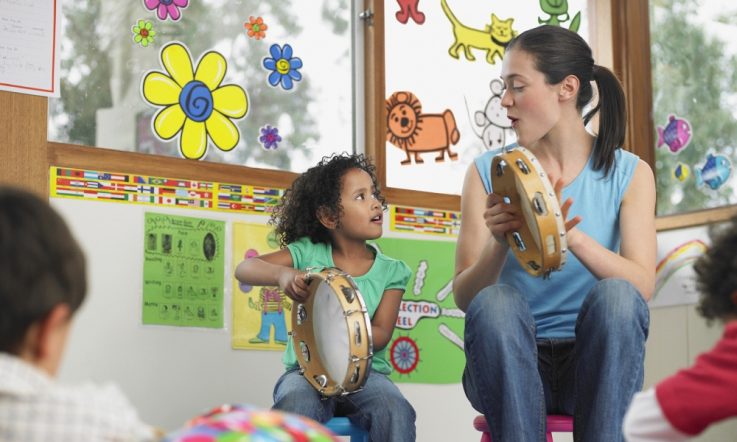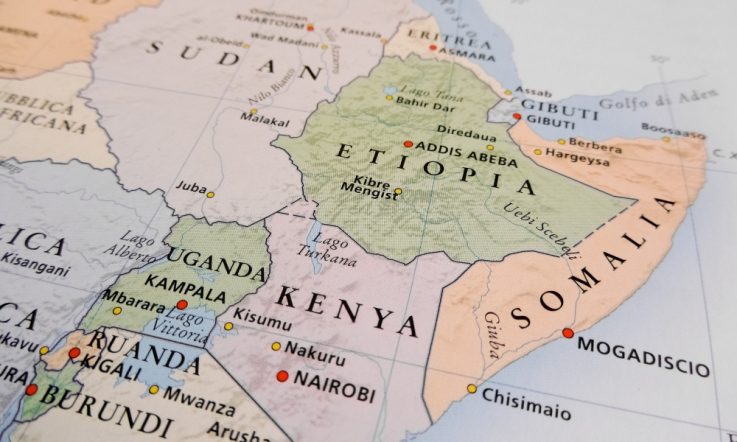Hello and thank you for downloading this podcast from Teacher – I'm Jo Earp.
Moving to a new school is an important time in any child's life. For students from a migrant or refugee background it often means learning a new language or joining outside of the normal transition period, at different points throughout the school year. I'm here at Noble Park Primary School to speak to Principal David Rothstadt about how staff support new students and their families, and create a safe and secure learning environment. Here he is, talking about the school context.
David Rothstadt: We're in the south eastern suburbs of Melbourne in the City of Greater Dandenong, which is considered one of the most disadvantaged local government areas in Australia and has students in the local government area from, I think, in excess of 100 different nationalities. Our school reflects that, in that we've got more than 40 nationalities represented, which then constitutes more than 46/47 language groups at last count. The school itself is just over 100 years old – I think it was 2011 we celebrated our 100th anniversary. In terms of staff profile, because of our classification as a disadvantaged school, we have 50 staff and we have 370 students, and schools of similar size would probably have around 30 staff. But we are fortunate that we get additional funding, so we use that to I guess have quite a different staff profile to that which you'd find in other schools.
So, we have multicultural education aides and they're representing four different nations but many different language groups – Vietnamese, Khmer, Afghan languages and Burmese languages – they're the actual multicultural education aides that we employ. They reflect some of our largest cohorts of students from non-English speaking backgrounds, but we also have a significant proportion of students from what people would call the subcontinent. So, I think nine different languages from India, Bangla students from Bangladesh and a lot of students from Sri Lanka. Then a rich mix … name a country and there's a good chance that they're here.
Jo Earp: David Rothstadt has been Principal of Noble Park Primary for 14 years. He says there has always been a multicultural student population, but there have been changes over the years.
DR: What I can say is that you can track some of the, I guess, world conflicts via the changes in the population at our school. When I arrived here the two significant groups were the Vietnamese and the Khmer … their parents were people who fled Vietnam and Cambodia at the time of their challenging conflicts. Then we had a larger Bosnian population, again fleeing that conflict in The Balkans. Then, the next group that we saw coming to the school was a large number of Sudanese students and students from the Horn of Africa, and that group is starting to wane – some of them are moving out of the area but I think there's also less of those students coming into the school. And then most recently, actually prior to most recently, we've had a large number of children come from Afghanistan and representing a range of ethnic groups from Afghanistan. Now the most recent burgeoning group is the Burmese students.
JE: Migrant and refugee students can arrive at Noble Park at any time throughout the year, sometimes with very little warning. I asked David what the priorities are when it comes to supporting students and families.
DR: The first thing we do is, people will come to a mainstream school because they're not aware of their rights to have access to the Language School. So, when you arrive in the country, in your first year you have access to getting intensive English study at one of the language schools. There's a Noble Park English Language School, which is less than a kilometre from us, just around the corner.
So, our first priority when a family comes in is we'll do a quick assessment of their English capacity and our strong recommendation is always for them to access that if we feel that they've got some deficits in their English, which, inevitably most of them do. We encourage them to go and access that service because they get six months, up to 12 months, of intensive English and maths training I guess. So, as they're focusing on that, so they are really ready to learn when they come into a mainstream school. Some families don't want to do that, from particular migrant groups. But we always say that this is a great opportunity and when your child comes to our primary school they will be really ready to learn. So, this is something that's offered to all students who come from [a migrant background].
We have a process where [the Assistant Principal] is responsible for that initial transition enrolment. There's an enrolment interview conducted with the new family and student, often using an interpreter – whether that be one of our interpreters who actually works for the school, or we access the interpreter service.
JE: Noble Park also adopts a different approach to most schools for placing students. Here, David explains it's about relationships.
DR: … The way we place students in the school is probably different to what most schools do. Because we have learning houses, and they're open plan, what we nominally do is we put each new child into a room, and often the room that the team leader in that area has. And, because of the way we operate, that's very fluid in terms of students moving around during learning times. It's rare that in that first week we would place that child in a home room. What we do is, we observe where they're feeling most comfortable, with whom they might make some initial friendships, some relationships. Then, based on numbers and the dynamics that we see with these students, and the advice we get from the language school, we then place the child. So, it's a slightly different way of operating and it means it takes a little bit more time. On one level the child doesn't have a home, but what we're trying to ensure is that the child has the right home in terms of the teacher; sometimes they gravitate to the teacher, sometimes they gravitate to some other students who might share their language, or they just might share a good relationship.
I've seen it before where, actually I spoke to two of our girls the other day who have now been at the school since the beginning of Term 2, and they finished up in the same home room and one of them is from an ethnic Chinese background and the other girl is from Afghanistan. But, they knew one another at the language school, they had a relationship and that's what they were comfortable with and they gravitated to one another. So, if it's not broken, why would you try and fix it, you know? Because you've got some artificial way of placing children …
Because of the funding that we get, I'm able to employ additional EAL support staff and so where you've got four home groups, there will be an additional staff member to support the students who have a non-English speaking background, but also other students who might need some sort of learning support. So, not just those students, but they've got a general support role and it tends to be around the non-English speaking background students. And we also have a reading specialist in each learning house. For each group of three to five home groups, there are two extra teachers. It's a luxury and our home group sizes are small – they're generally around 21 to 22. Quite deliberately we keep our home groups small, because that way we can have more individual and adult attention for those students.
So, there's that support mechanism there, which means … and it's also about justice for everyone. It means that the mainstream teacher knows that that child who is brand new is getting supported with one of their colleagues in that team. It also means that the mainstream teacher then has plenty of time to focus on their core home group, who also have high learning needs because of the non-English speaking background. I don't think I said at the start, 90 per cent of our students are non-English speaking background. So, it's about providing support for everyone and making workload manageable, and making effective teaching manageable for those students.
So, that's one aspect [of the support we provide]. And one of the practices of our school, we go under the banner of ‘relational learning'. What that means it that we're always looking at ways to connect with our families and connect with our students in a really genuine way and it's not just about waiting, by chance, to get to know what's happening in a child's life in terms of their family and their personal interests.
When a new student comes into the school, they will do what we call a relational conversation with the teacher. And so at the start of the year that looks like … each teacher has a basic script, age-appropriate, and they are given time, (they're released from their teaching duties) to have at least a 15 minute interview with each child that they get at the start of the year, so as they can build a picture of the child. What food do you like? What happens at home? Who are the siblings? Is there anyone else living in the house? What are you hoping to learn this year? A whole range of things, because, as a teacher, what we know is that in that first few weeks of school you probably will get to know 15 out of the 23 of your kids because they'll stand out for various reason – you know, being that extroverted personality, being the child who is perhaps a little bit mischievous, being the child who's got some high welfare needs, being the child who's extraordinarily bright. Whatever it may be, but there are probably seven or eight kids that you have not much to do with because they're just those compliant kids, they're just present, but they're not necessarily demanding your attention.
So, it's quite a deliberate intent to make sure that you have a one-on-one conversation with every child at the start of the year. And in that first part of the year the other thing we do is a thing called You Talk We Listen. We don't do parent-teacher interviews at the start of the year, we actually invite the parents up (which is really challenging for the parents) and we say ‘tell us about your child', ‘tell us about you', So we can get a picture of what's going on at home. We get a picture … because you ask teachers (not at this school I would hope but teachers at other schools) ‘what does the child's parents do for a living?' … I'm going to say they probably won't have a clue. ‘Do they do shift work?' ‘Are they the only family in the household?' And here we've got lots of situations where families have multiple families living in the household – it's just one of those things that happens. Sometimes it's about poverty, sometimes it's about having your own community, sometimes it's just about the relatives have got together and it's economically viable for them to do that in the short-term. But that's a pretty important thing to know about the conditions the child is going home to and learning in, and what their chances are of getting a decent sleep, decent nutrition, etcetera, etcetera. It's about trying to build a picture of the whole child, not just that superficial stuff that, the reality is, that's what most schools have time for and I get that, but we do have the opportunity to do that and wherewithal, but it's also a strong part of our relational philosophy – get to know the child.
So, that was the long way of getting around to … those children who come in half way through the year, or the beginning of third term, the teachers are expected to conduct a relational interview with them. And more than likely because of the nature of those students who come in second and third term, fourth term, there's potentially a welfare picture behind it. We have another staff member, who's actually a qualified teacher but her role is actually community connectedness. So, what she will do is she might make contact with the family and see if there are any things that we need to do, need to know about the child and the family and, you know, get that broader picture. Because we don't have the facility necessarily to do the You Talk We Listen, which is a massive logistic exercise by the time we employ all the interpreters etcetera, etcetera on a given night.
JE: As we mentioned earlier, some of the children are coming from conflict-affected areas and are fleeing traumatic circumstances. Creating a safe and secure environment is a priority at Noble Park. Our final discussion then is on the topic of learning and play spaces – indoors and outdoors – and that includes encouraging children to connect with nature, play with rocks and sticks, climb trees and build their own creations from scrap materials. The school follows a developmental learning approach, that came out of its work with Kathy Walker.
DR: What it means is you set up a home room in such a way that, particularly in the Junior area, that it has lots of stimulus in it for children's learning, lots of sensory materials, a lot of wood finishes, natural finishes in the learning area, so they create that feeling of a proximity to nature I guess. I think that it's always more welcoming and warming when you've got wood rather than plastic everywhere. So, that's one aspect of it. We don't have desks, we don't have things in rows, we do have tables for the students to work on and alternative furniture for children to work on the floor in comfortable ways. We have sofas, we have beanbags etcetera, etcetera.
One of the things that we know is that children feel safe and secure if there are nooks and crannies for them, so we construct, we use trellis and we use draped material and the like to soften the room and provide spaces that children can sit in and be secure while they're reading, or doing their writing, or whatever it may be. We know that the children respond really, really well to that environment. Sometimes there's music playing in the room when they're doing their work, if it's suitable for them to be doing that.
… And then, when you go into Middle learning house, which is the 3/4s and the Senior learning house, you see the same theme, but it starts to look a little bit more sophisticated in terms of having more elements of your traditional classroom. There are a couple more spaces probably for them to sit and write at. Some of the materials you'll see around the room are different, a little bit more technology available to the students in those spaces.
So it is about them being safe, but warm and welcoming, and lots of open, breakout spaces for the students to go to so as they don't have to stay in their home rooms. So, what you see is that flow, and so, you know, it's our philosophy that every teacher, while you do have your own home group, every teacher owns every student in that learning house and they should know a number of significant adults that they can go to. So, you would see almost twice as many adults in a learning house as you would in a school that didn't have the advantages that we have (through our disadvantage), to have access to that money to employ additional staff.
And, our spaces outside – there's been a lot of thought go into the way we create spaces outside. The number one thing I guess is that many, many of our students live in flats or units, so they don't have a back yard, they don't have access to that free play space and, you know, opportunity to engage with nature. Natural pedagogies are really, really important to us at Noble Park Primary School. So, if you walk around our school you will see all the traditional offerings in terms of basketball courts and an open space for kids to kick a soccer ball around and play chasey etcetera, etcetera. But, I can assure you chasey is better here than in most places because we don't have out of bounds areas. We have a significant kitchen garden area where there are chooks also. Animals are fantastic pastoral devices, some of those children who just need quiet time will go and sit around with the chooks or go into the chook pen. In that garden area it's quite a tranquil place. So, kids will go there often just for quiet time. We have outdoor home rooms, outdoor classrooms (for want of a better description) where we've put tables and so on, so teachers can go out and work outside.
Then we've got something that was a massive enterprise for us – we've got a dry creek bed, which again allows them to have that natural play. It's like a translation of what they do in investigations in the morning, they can go out there, there's rocks, there's sticks, there's everything. So, a rule in our school is you will play with sticks and you will play with rocks, because it's fun and why wouldn't you?
And then we have, one of the other things we've developed is a woodland, which actually has deciduous trees, because most of our trees are natives so we wanted to give children that experience of the seasons. Many of our kids of course come from the tropics, so they don't know what seasons are. And, it's built on a mound, we've created mounds around our school because one of the things you'll find about most school grounds is they're typically flat and we've tried to change the profile of the school so it looks that little bit different. The woodland, I think, has 80 flaming red maples in it.
… Because of our engagement in play we have a thing called a play pod – it has a whole lot of industrial scrap in it and that's open every day and the children just pull all of that out. They can do imaginative play with that. It's got bolts of cloth, it's got all sorts of different bits of wood, it's got seats from car factories, it's got all manner of things and the children can just construct with that.
The Assistant Principal travelled to Europe to look at natural play in forest schools in Scandinavia and in Wales and in Spain and one of the things she came back with was looking at play spaces and developing a forest area. So it's been a labour of love for us over the last three or four years and we now have, [it's] ceasing to be an aspirational forest, it's actually now you can hide in it and it's full of leaf matter, debris, twigs, sticks, branches etcetera, etcetera, that the children can construct with – and they build humpies and they build all sorts of different huts, they make little art installations and so on.
It's again just demonstrating that diversity of choice of opportunity for children at playtime – because children are learning all the time, when they're at school. They're socialising and negotiating during their break times and so we characterise those spaces as playful and diverse. Teachers are really excited because they don't do yard duty here – they do really, they do play support, because we wanted to flip that notion of … yard duty implies walking around like a Sergeant Major and telling kids what not to do. Actually if you're out there with the kids, it's your work, you should be supporting their play and helping with them it, and engaging with them while they're playing.
Because we allow children to use sticks and rocks and so on you have to risk manage that stuff and kids are allowed to climb trees here. There's no difference in the height they climb to in a tree that they could climb on playground equipment – absolutely no difference – but people get really scared because they're in a tree, but if they're climbing on playground equipment everyone's okay, if they're up two-and-a-half metres in the air. Which is weird, because if you fall, you're going to fall on metal. Whereas if you fall out of a tree you're probably going to hit a couple of wooden branches and land on some relatively soft ground, because we've managed that underneath. So, the teachers are out there to support the risk management and say ‘how are you going with that?' if they're up in a tree, ‘I'm not so comfortable with how high you are in the tree, do you want to make sure you come down'. But the fact is, if a kid's up really high in a tree it's because they know how to climb. Kids will manage their own risk.
So, those spaces are all very deliberately designed to create that connection with nature, I guess, that sense of freedom that some of them might not get because of their personal home situation, and, it's extending their learning. And I think all those things contribute to our kids feeling safe.
That's all for this episode – to keep listening or to download all of our podcasts for free, whether it's from our series on School Improvement, Behaviour Management, Global Education, Teaching Methods, Action Research or The Research Files, just visit acer.ac/teacheritunes or soundcloud.com/teacher-ACER. The full transcript of this podcast is also available at teachermagazine.com.au. That's where you'll also find the latest articles, videos and infographics for free.
David Rothstadt says building a picture of each child and their family circumstances is an important part of the transition process.
He gives the following questions as examples – think about the students in your own class and how many could you answer: What food do you like? What happens at home? Who are the siblings? Is there anyone else living in the house? What are you hoping to learn this year?



